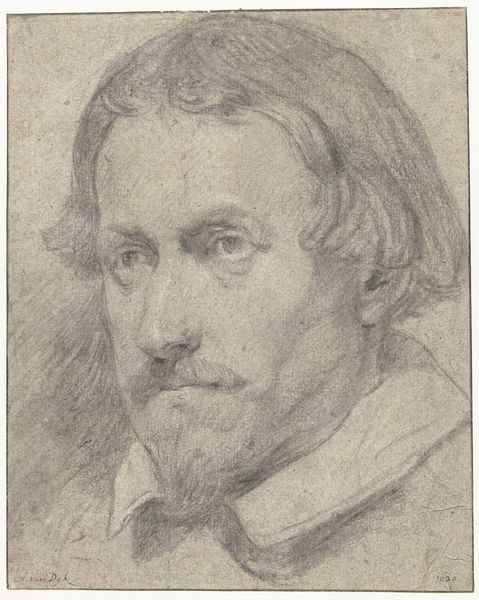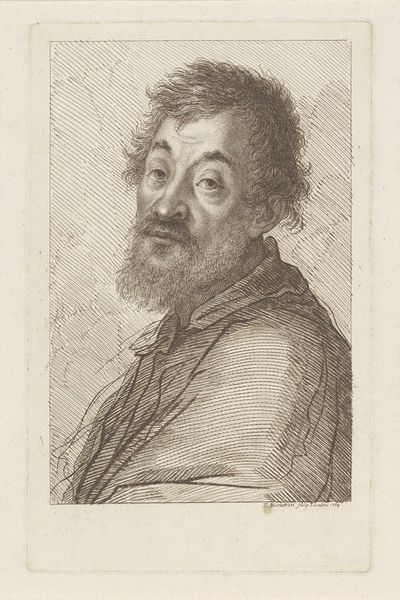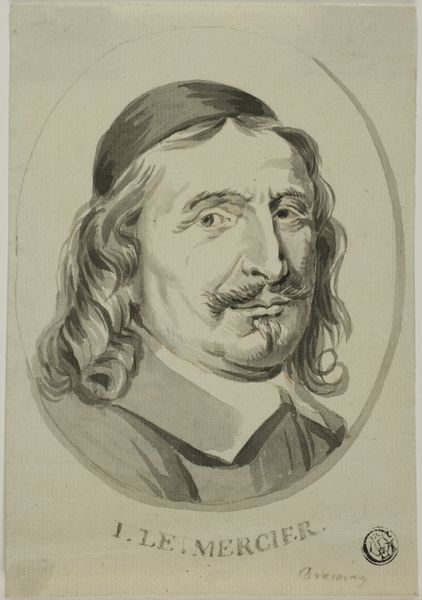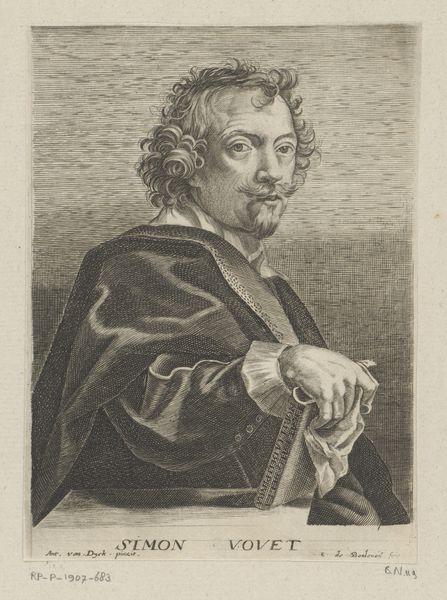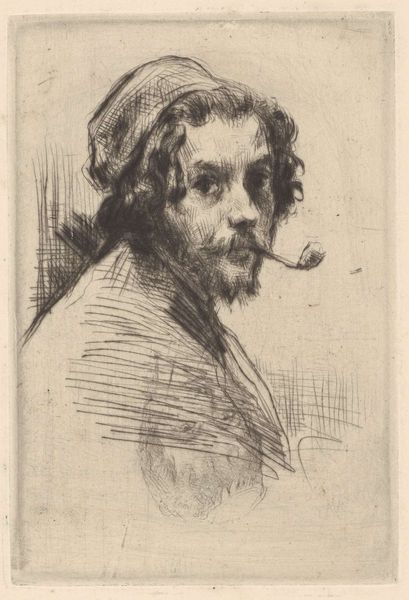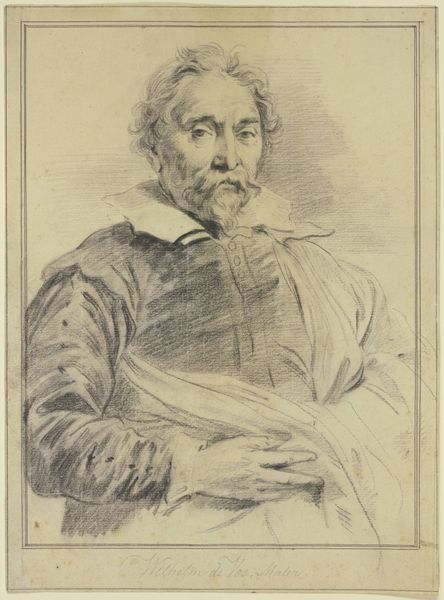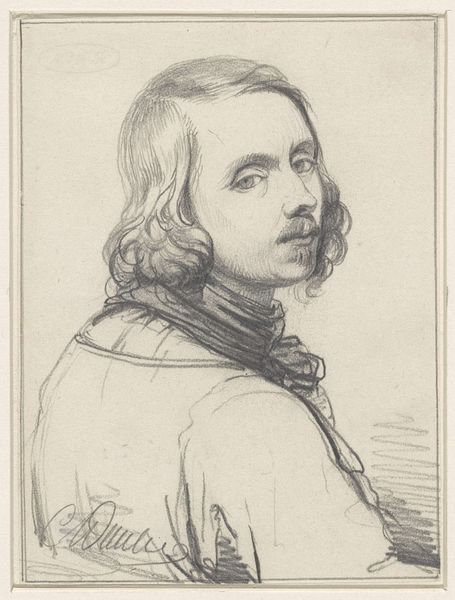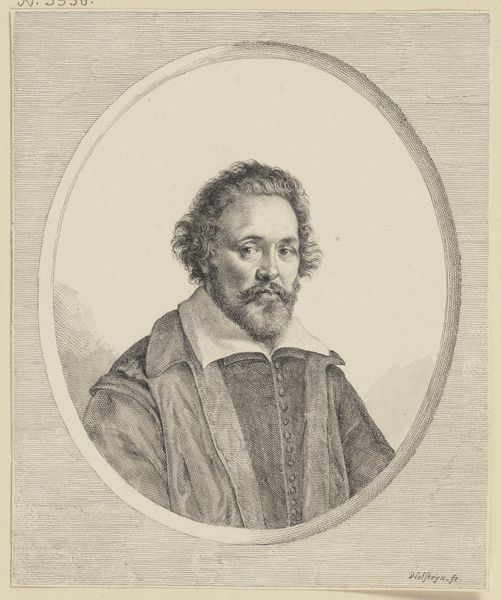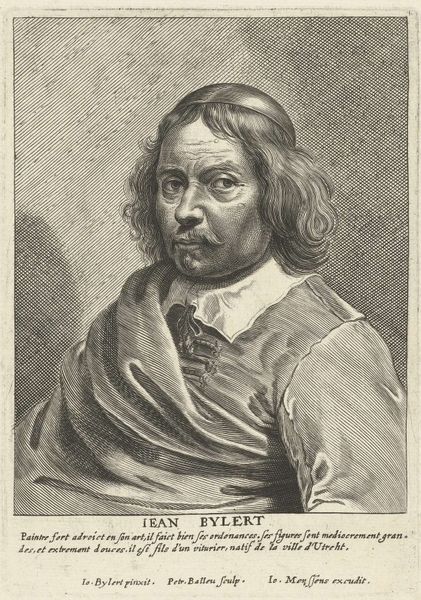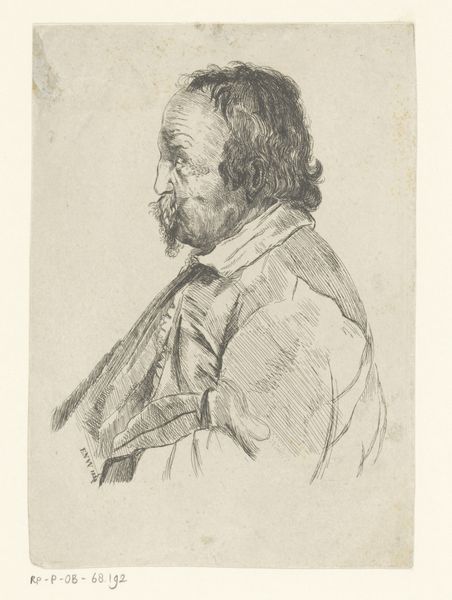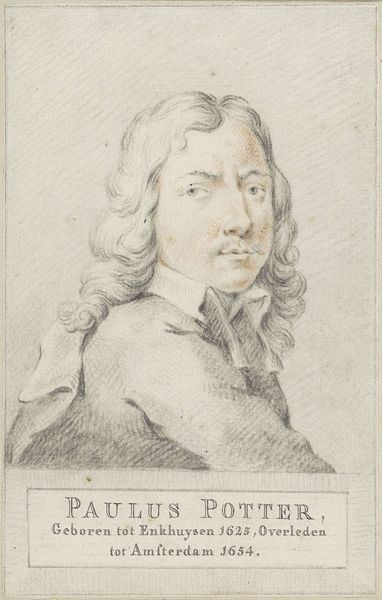
drawing, watercolor, ink
#
portrait
#
drawing
#
baroque
#
charcoal drawing
#
watercolor
#
ink
#
watercolour illustration
#
genre-painting
#
watercolor
Dimensions: height 90 mm, width 80 mm
Copyright: Rijks Museum: Open Domain
Curator: Before us we have "Portret van A.B. Quest," created sometime between 1705 and 1754 by Jacob de Wit, executed with ink and watercolor. What strikes you first about it? Editor: The muted palette, immediately. A delicate wash, almost ghostly. The artist uses thin strokes of grey ink to delineate form. I am curious as to how such subtle coloring holds up today, from a material perspective. Curator: Absolutely. The restrained use of color amplifies the dynamic play of light and shadow, especially evident around the eyes and along the jawline, lending considerable depth. It exemplifies baroque portraiture, even in its monochromatic scheme, achieving powerful realism with minimal tonal variation. Editor: Yes, there's something deeply economical in his approach. Ink and watercolour, modest materials wielded to convey the wealth and position we assume the sitter had held. De Wit seemed very aware of the value of labor and the use of minimal media for maximum return in portraying A.B. Quest. Curator: The composition certainly guides the viewer's eye directly to the face; notice how the soft contours of the subject contrast against the bare, untouched paper, reinforcing a visual hierarchy and creating a focal point within the defined, formal structure of the piece. The gaze suggests intellectual depth. Editor: Yet, there is also this sense of process; it is visibly handmade. I'd be very keen to learn about how these particular batches of watercolour were created, and about their affordability and acquisition. I imagine that these elements speak volumes about social class at the time. Curator: An interesting avenue of thought! For me, the drawing functions as a masterclass in expressive potential within formal restraint. It balances observation with stylistic interpretation, crafting an eloquent portrayal that surpasses mere representation. Editor: Indeed. Through a closer examination of material and artistic methods, we see reflections not just of aesthetics, but also of social contexts, economic conditions, and of labor. Curator: Precisely. De Wit has created a dialogue across centuries. Editor: One awaiting our deeper investigation!
Comments
No comments
Be the first to comment and join the conversation on the ultimate creative platform.
